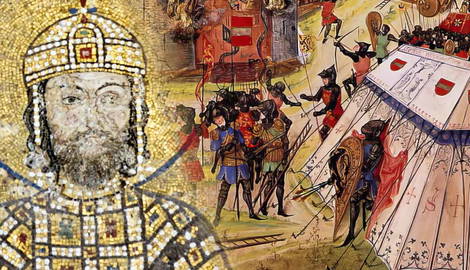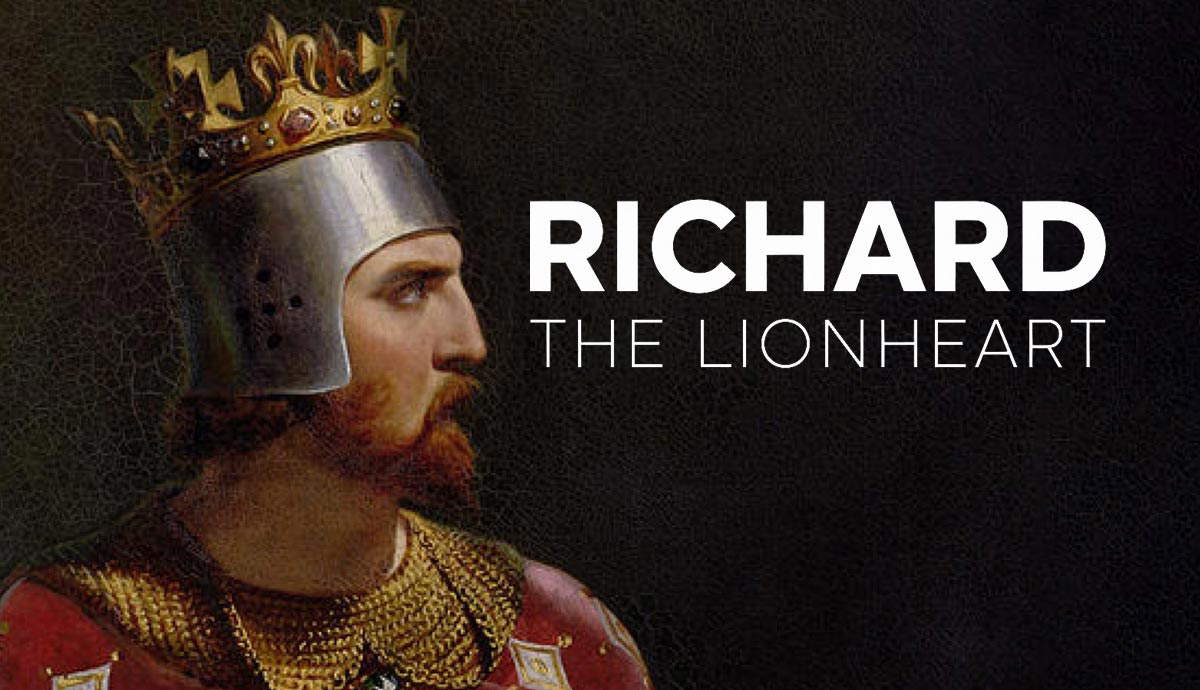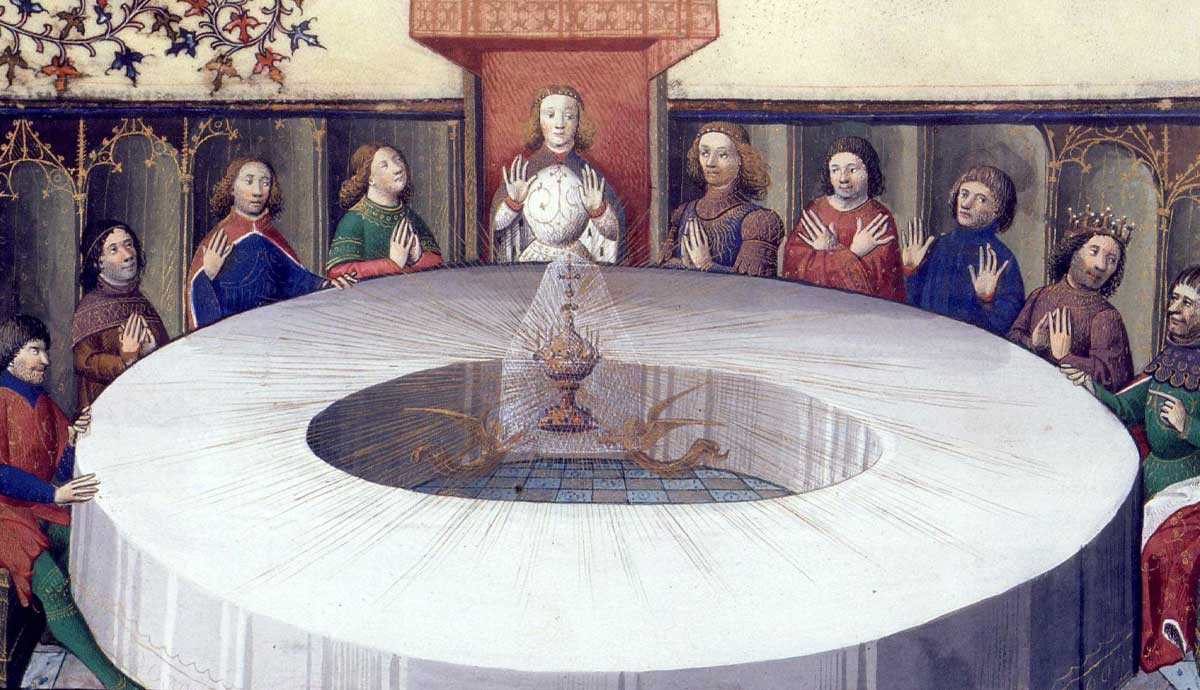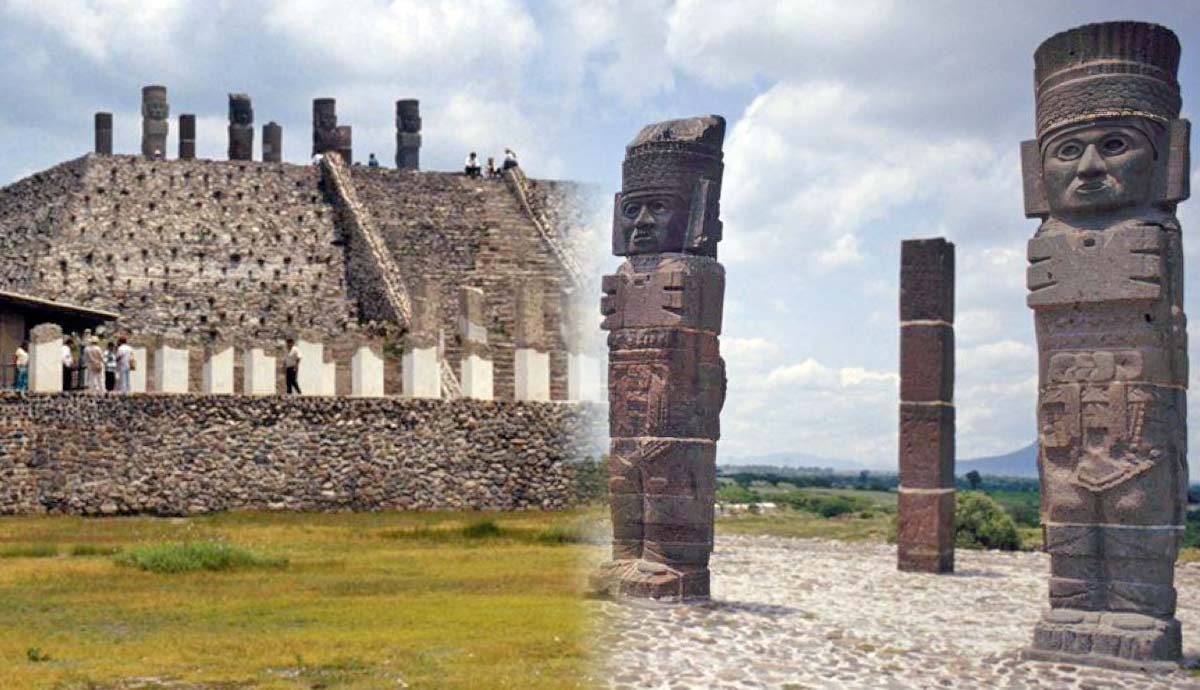
The Komnenos Dynasty came from obscure origins to revive the Byzantine Empire after a disastrous period of weak emperors and military setbacks. Alexios Komnenos took power in 1081 CE and began an astonishing reversal of the empire’s dire fortunes, continued by his descendants during what became known as the Komnenian Restoration. In 1095 CE, Alexios sent a request for military support to the Pope. This was the catalyst for the Crusades that would have an unprecedented impact on the Byzantine Empire and the rest of the world.
The Rise of the Komnenos Dynasty

The origins of the Komnenos family are frustratingly obscure. The first recorded member is Manuel Erotikos Komnenos. Manuel’s parentage is unknown, although he was likely of minor noble descent. He appears in a record of 978 CE leading a loyalist army to victory against a rebellion. For his loyalty and success, he received a fief on the Black Sea coast of Anatolia. There Manuel built a castle, known today as Kastamonu.
Manuel had two sons, Isaac, and John, who became accomplished military men, and Isaac was a popular general on the empire’s eastern border. In the cloak-and-dagger world of imperial Byzantium, military command was held by members of elite families of provincial nobility. Meanwhile, in Constantinople, the Church and civilian administrators held sway. These two factions were kept in balance by the powerful emperors of the Macedonian Dynasty.
However, the last Macedonian ruler died in 1055 CE and the imperial throne then went to a civilian aristocrat, Michael. Within two years, Michael had alienated the military elite, who rebelled with Isaac as their leader. In 1057 CE, Isaac forced Michael to abdicate and took the throne himself. Ironically, Isaac in turn alienated the civilian bureaucracy, which forced him to abdicate in 1059 CE.
However, this was just the beginning of the Komnenos story. For the next 20 years, (while the empire suffered crises of government, faith, and military) Isaac’s nephew, Alexios, went into the family business of military command. Alexios, born the same year his uncle had become emperor, gained his first military command at just 19 years old. Just five years later in 1081 CE, he also took the throne in a military-backed coup. Thus, the reign of the Komnenos, and the restoration of the Byzantine Empire, truly began.
Alexios and Saving the Empire

The Byzantine Empire was in a truly dire state when Alexios took power. The last two decades had seen further disharmony among the civilian and military elites that had weakened the imperial state, while an inflation crisis had devastated the economy. Minor revolts and heretical rebellions also kept popping up throughout the empire.
However, a greater problem by far were the military disasters the empire’s army had suffered. In the west, the arrival of the Normans in Italy had pushed the Byzantines out of the peninsula. Even worse, ambitious Norman lords had begun raiding and invading Greece and threatening the Byzantine heartlands. To the east, the situation was yet more dire. The invading Seljuk Turks had won a massive victory over the Byzantine army at Manzikert in 1071 CE that had devastated the Byzantine army.
In the decade since Manzikert, the Seljuks had conquered almost all of Anatolia save for some small holdings on the west coast. Even the traditional Komnenid holdings of Kastamonu had been lost.

Alexios’s reign began inauspiciously with a defeat struck by the Normans, led by Robert Guiscard at Dyrrachium in the year of his coronation. However, the young emperor turned to the other weapons in the Byzantine arsenal — diplomacy and bribery. He managed to convince the Holy Roman Emperor Henry to attack the Norman lands in Italy. This forced Robert back to Italy and allowed Alexios to push the Normans out of Byzantine territory entirely.
Alexios followed this success with swift internal changes. He reformed the Byzantine currency to restimulate the economy and began rebuilding and restructuring the military following Manzikert and Dyrrachium. With his western and northern fronts stabilized, a growing economy, and a pacified political scene, Alexios was able to turn his attention to the Seljuks in Anatolia. He made some progress in recapturing parts of the coast, but his army still lacked the numbers to make serious headway. This is why, in 1095 CE, he decided to write a letter to the Pope requesting military aid.
The First Crusade

No discussion about Alexios’s reign can be had without discussing the Crusades and their impact on the history of the Byzantine Empire and the world as a whole. Alexios clearly had no idea what his missive to the Pope would create, but this does not mean it was some desperate last-gasp gamble. Politically (if not religiously, following the Great Schism in 1054 CE) Rome and Constantinople were on good terms, thanks in large part to Alexios’s diplomatic efforts. Furthermore, there was a precedent for “Latin” (that is Catholic West European) soldiers serving the Byzantines. In fact, Count Robert of Flanders had already served Alexios with immense success against the Seljuks.
Arguably Alexios’s request to the Pope was quite sensible. Due to the shortcomings in his own forces, he requested military support from an ally. What Alexios did not predict was the notorious Pope Urban II using his request for his own means. Namely, to whip up the squabbling warriors and religiously zealous peasants of Europe and direct their violence away from Europe and toward the supposed infidels of the Islamic world.
Alexios had expected the Pope to arrange for a detachment of knights and mercenaries. He did not expect first a swarm of peasants—the People’s Crusade, which tore through his empire on their way to destruction in Anatolia—nor the wave of religiously fanatical knights of the First Crusade who followed.

Though it was assumed he would, Alexios decided against taking direct command of this seemingly military migration. Instead, he gave them what supplies and transportation he could arrange and obtained promises that any territory captured would be returned to the Byzantines. This worked for a time when the Crusaders captured Nicaea and carried on toward the Levant. However, after the capture of Antioch in 1098 CE, a series of miscommunications between the Crusaders and Alexios occurred. This led to the Crusader leaders rescinding their oaths and carving out their own independent kingdoms — the notorious Crusader States of the Holy Land.
John II Komnenos

Despite the unfortunate setback of accidentally unleashing a wave of war-mongering religious fanatics onto his doorstep, Alexios’s reign into the 12th century was a continual success. He took more territory in Anatolia and repaired relations with the Crusaders, though they maintained their independence. Internally meanwhile, his monetary and civil reforms bore fruit, with the ambitions of the imperial Bureaucracy and military aristocracy kept in check. In his impressive 37-year reign, he took the empire from near collapse to being stable, functional, and back on the offensive.
All that said, things were still fragile. When Alexios died in 1118 CE, his wife and daughter attempted a coup against his son John II, while external enemies including the Pechenegs and Hungarians began probing raids into the empire. A less capable ruler might have collapsed under the pressure but not John. He swiftly dealt with the attempted coup before moving to continue what his father had started.

John was known as “the Beautiful” for the splendor of his reign rather than his looks, and it was a truly splendid reign. He continued strengthening the economy and maintained good relations with the Pope, the Holy Roman Empire, and the Crusader States, even inviting Crusaders and other Latins into his court. This was part of John’s meritocratic policy promoting men of ignoble or foreign birth but great ability to senior positions in his court and armies. This gave him capable subordinates directly loyal to him and limited the influence of the ambitious great noble houses.
John was his father’s equal in drive and brilliance. In military terms though, many argue he exceeded his father by quite some margin. He utterly destroyed the Pechenegs at the battle of Beroia and fully repulsed Hungary by 1129 CE. His one blemish was an inconclusive naval war in Crete against the new merchant power of Venice. Against the Seljuks in Anatolia, however, John would see his greatest successes.
John II and Restoring the Empire

After defeating Hungary, John swiftly went on the offensive in Anatolia, but the Seljuks were stubborn opponents, and he could not be away from Constantinople for fear of leaving conspiring nobles unsupervised. So John kept his campaigns brief but productive. He would make small but notable gains, ideally capturing strongholds to secure his conquests, before returning to Constantinople. A ruler can never be everywhere they are needed at once, so John made sure to not be too far away from anywhere for too long.
These small but regular siege-based gains also reduced pitched battles and the risk of another Manzikert-like disaster. Furthermore, John was simply a master of siege warfare, often taking seemingly impenetrable castles easily and building on his successes quickly. In this way, John recaptured territory from the fractured Seljuk kingdoms of the Rhum Sultanate and the Danishmendids during the mid-1120s to 1130s CE.
He retook western Anatolia, the southern coast, and even parts of northern Syria where he also made Cilician Armenia, several Crusader states, and even some independent Islamic emirates into vassals. His greatest triumph was the siege of Shaizar in 1138 CE, which took place in cooperation with the Crusader States of Antioch and Edessa. While the Crusader commanders stayed in their tents playing dice, John personally led an assault and capture of the city.

John died suddenly, from septicemia after cutting himself during a hunt, in 1143 CE. He was aged just 56 and planning another campaign against the Rhum Sultanate. His final act was to appoint his youngest son Manuel, born in 1118 CE, to succeed him. Contemporary sources suggest Manuel showed greater military skills and likeability than his older brother, Isaac. John’s meritocratic policy continued until the very end.
Despite the many successes of John’s 25-year reign, there was still much work to be done. Fortunately, Manuel was made of the same stuff as his father and grandfather.
Manuel Komnenos, the Great

Manuel—known as the Great—was a man of ambition. Growing up with his father’s Crusader advisors, he became very pro-Latin. His court adopted the notions of Chivalry and even held jousting tournaments. His pro-West policies left him on good terms with Pope Eugene III, which helped him prepare for the first major event of his reign, the Second Crusade in 1147 CE.
Manuel, unlike his grandfather, was well prepared for the sudden arrival of two Crusader armies looking to retake the Crusader state of Edessa. He swiftly and peacefully (aside from some minor skirmishes) moved the Crusaders through his empire, securing an alliance with Holy Roman Emperor Conrad III into the bargain.

Though the Crusade failed, Manuel’s allegiance with Conrad encouraged him to attack the Normans in Southern Italy, who were once again menacing Greece. The Normans backed down but his meddling in Italy led to a falling out with Conrad’s successor, Frederick Barbarossa, and a protracted on-again-off-again conflict with Venice. Despite this, Manuel saw other successes during the 1150s and 60s CE.
In the West, he won victories over Hungary and Serbia and brought the entire Dalmatian coast into the Byzantine Empire. He was also recognized as suzerain of all the Crusader states, including Jerusalem, by 1159 CE and made further conquests in Anatolia. He even made the Rhum Sultanate his vassal in 1162 CE.
Yet, the good times would not last. First came a failed expedition to Egypt with the Kingdom of Jerusalem in 1169 CE. The biggest failure though, was in Anatolia. In 1176 CE, during a punitive expedition against a rebellious Rhum Sultanate, Manuel’s army was ambushed at the battle of Myriokephalon. Though not as devastating as Manzikert, the defeat forced Manuel on the defensive. While campaigning to protect the gains of his forebears, Manuel died of a fever in 1180 CE.
In his 37-year reign, Manuel invested much to make the Byzantine Empire the most prosperous and influential it had been for centuries. Once again, a Komnenid Emperor passed on, leaving the empire in an empowered but still precarious position. All that was needed was another strong heir to keep up the good work. This time, however, there was none.
The Downfall of the Dynasty

Manuel’s only son, Alexios II, was eleven when his father died. Until he came of age, power rested with a regent, and all at once the Byzantines returned to their ancient pastime of squabbling for power. Alexios’s regent was his mother Maria, but she was a Latin, from the Crusader state of Antioch.
While the Komnenids were pro-Western, the common citizens and other noble families were less so. The idea of a foreign princess ruling the empire was not popular. Nor did Maria help herself with some of her questionable policies. The most egregious was her imperial favoring of Italian merchants, including those from the empire’s erstwhile rival, Venice. Resentment boiled over into open defiance and Maria did not have the military or political support to maintain control.

In stepped the ambitious Andronikos Komnenos. The son of Alexios I’s youngest son, Isaac, Andronikos had been exiled by Manuel for his many scandals and schemes. In the civil disorder of Maria’s reign, he returned to Constantinople in 1183 CE to a hero’s welcome from its citizens.
Andronikos swiftly deposed Maria and her dwindling supporters, then made himself co-emperor with Alexios II before quietly having both mother and son killed. His ascension sparked a riot in the city against the resented Italian merchants and other Latins in the city. Almost 80,000 people, it is claimed, were killed, but sadly this was just the beginning of the violence. Andronikos rolled back many of the pro-Western policies and earlier reforms of the other Komnenids. He also came down hard on the military aristocracy which had enjoyed the favor of a near century of successive military campaigning. In a state of increasing paranoia, Andronikos had all dissenters or perceived threats executed.
The empire endured two years of Andronikos’s tyranny. However, in 1185 CE the Normans invaded Greece, allegedly to avenge the massacre of the Latins, and Andronikos found none of his armies nor generals were willing to defend him. As the invaders marched towards the capital, a noble named Isaac Angelos, distantly related to the Komnenids, finally stood up to Andronikos and deposed him. The last Komnenos Emperor was then seized by a mob and brutally lynched.
The Final Legacy of the Komnenos Dynasty

The reign of the Komnenids came to a squalid end barely a century after it began. Once again, urban nobles and military aristocrats squabbled for power as the borders of the empire crumbled under the threat of invasion. Yet it would be far too cynical to claim that the Komnenos emperors had achieved nothing. In three generations, Alexios, John II, and Manuel had transformed the Byzantine Empire from a state of ruin back into a superpower.
All three emperors undoubtedly rank among the greatest emperors in Byzantine history. While they may not have ultimately succeeded in restoring the empire to its original borders, they managed to pull it from a death spiral, revive it civilly and militarily, and restore much-lost glory. They bought Constantinople a century of much-needed stability and success. The great tragedy was that this stability was tied to their own abilities as emperors and could not survive less able successors.
It is hard to say whether the Komnenids only delayed the inevitable collapse of the empire, or if they could have succeeded given different circumstances. One can only speculate what could have been had John II survived for one more campaign or had Manuel lived long enough for Alexios II to reach adulthood. Yet we must also acknowledge the tragic reality of the events set in motion during the Komnenian restoration.

In 1204 CE, after Isaac Angelos was deposed by his own brother, his son Alexios employed the army of the Fourth Crusade, financed by Venetian merchants, to take Constantinople from his uncle. Then, when Alexios was killed in a riot before he could provide payment, the Crusaders promptly sacked the city, with much of the treasure returning to Venice. The empire was then divided between the Crusaders and Venice, with a few Byzantine noble families creating splinter kingdoms in the empire’s extremities, one of which—the Empire of Trebizond—was ruled by an offshoot of the Komnenos family.
Though the Byzantine Empire would eventually return, it would never be the same again. This is perhaps the most tragic irony of the Komnenos legacy. The very movement Alexios I unwittingly engendered to try and save the empire, all those years before, would lead to its darkest hour.










